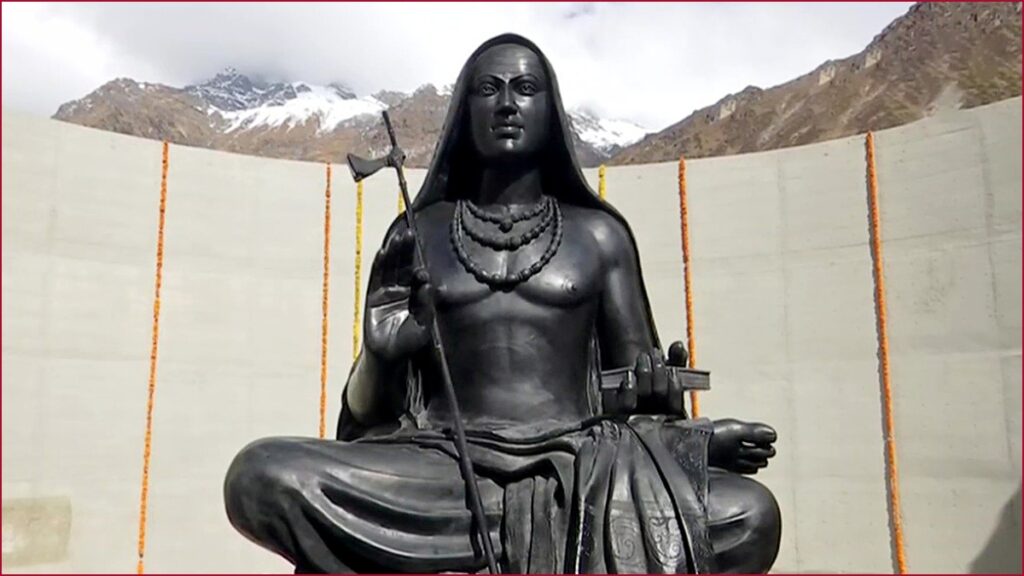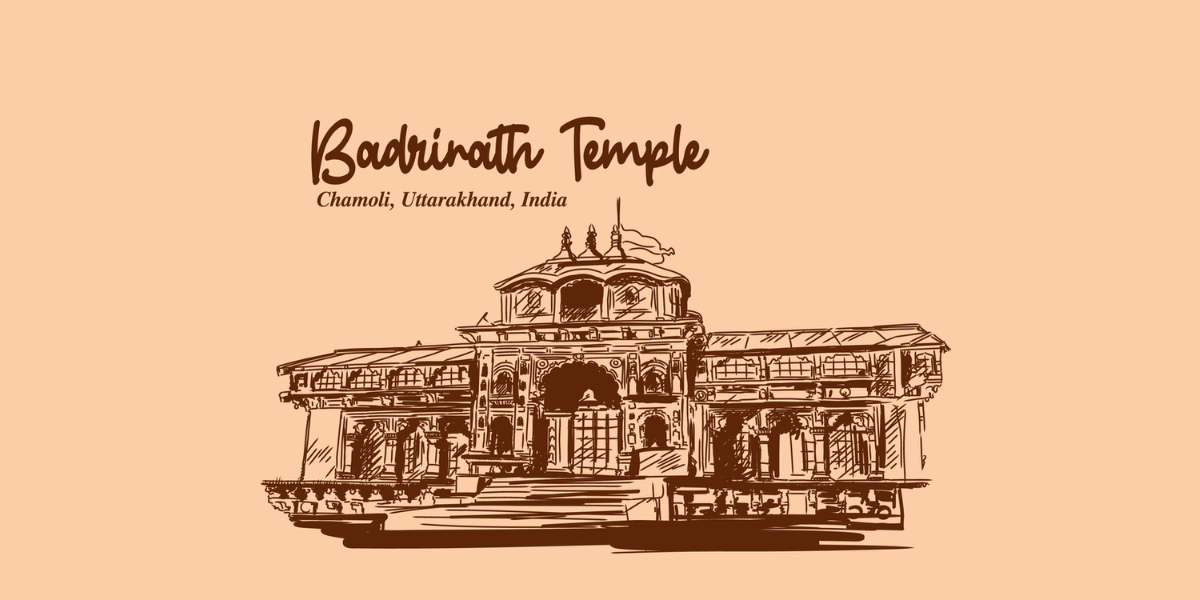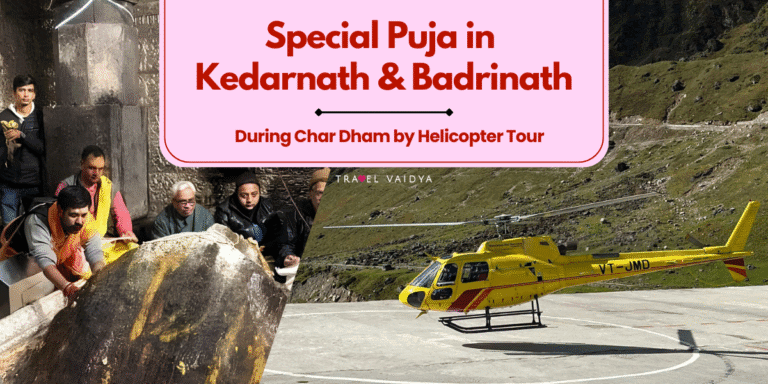Char Dham Yatra history holds a prominent place in Hindu culture as a spiritual journey to the four most sacred sites in the Garhwal Himalayas of Uttarakhand—Yamunotri, Gangotri, Kedarnath, and Badrinath. This pilgrimage is not only about faith but also carries a deep historical and cultural resonance that dates back centuries. It’s a profound journey that has inspired countless devotees, enriching India’s spiritual heritage.
Table of Contents
Plan Your Spiritual Yatra With Us !
Get Customised Private Tours by Experts from Travel Vaidya
The Origin of Char Dham Yatra
The roots of Char Dham Yatra can be traced back to the efforts of Adi Shankaracharya, a revered 8th-century Indian saint, philosopher, and theologian. His vision aimed to unify Hindu beliefs and practices across India. By establishing the Char Dham pilgrimage circuit, Shankaracharya provided a spiritual framework that helped unite people from diverse regions under a shared religious journey. The tradition he began has flourished ever since, drawing millions to the Himalayan shrines each year.
Yamunotri: A Spiritual Beginning
Yamunotri, dedicated to Goddess Yamuna, is traditionally considered the starting point of the Char Dham Yatra. Historical records suggest that this temple was constructed by Maharaja Pratap Shah of Tehri Garhwal in the 19th century. The location’s significance stems from its association with the Yamuna River, whose waters are believed to cleanse one’s sins. The hot springs near the temple, especially the Surya Kund, add to its historical and spiritual charm.
Gangotri: The Seat of the Sacred Ganga
Gangotri, the origin of the revered River Ganga, holds immense historical and mythological importance. It is believed that King Bhagirath performed rigorous penance here to bring Ganga down from heaven to cleanse the ashes of his ancestors. The current temple at Gangotri was built by the Gorkha General Amar Singh Thapa in the early 18th century, showcasing a blend of spiritual devotion and architectural simplicity. The site continues to resonate with tales of penance and purification.
Kedarnath: Ancient Symbol of Shiva’s Might
Kedarnath, dedicated to Lord Shiva, stands as one of the twelve jyotirlingas and is among the most ancient pilgrimage sites in India. According to historical accounts, the temple’s foundation dates back over a thousand years, with contributions from both the Pandavas and Adi Shankaracharya. The shrine’s location at an altitude of 3,583 meters makes it a marvel of ancient engineering. Shankaracharya’s samadhi near the temple further cements Kedarnath’s importance in the Char Dham circuit.
Badrinath: Vishnu’s Sacred Abode
Badrinath, dedicated to Lord Vishnu, is perhaps the most well-documented of the Char Dham sites. References to this temple appear in various Puranas and epics, highlighting its timeless spiritual significance. Adi Shankaracharya re-established the shrine in the 9th century, making it a prominent seat of Vaishnavism. Badrinath’s location along the Alaknanda River, surrounded by the Nar and Narayan mountain ranges, has made it a symbol of divine tranquility for generations.

Contributions of Adi Shankaracharya
Adi Shankaracharya’s contributions to the Char Dham Yatra cannot be overstated. His establishment of the pilgrimage was an act of spiritual unity, encouraging people to embrace their faith across cultural and regional differences. Historical accounts reveal that Shankaracharya composed several hymns and texts during his travels, reinforcing the spiritual doctrines associated with these shrines.
Read Related Blogs
Top Places to Visit During Char Dham Yatra »
Char Dham Yatra Route Map: Best Road Journey Guide »
Char Dham Yatra Significance: Why It’s a Must-Visit »
Top 6 Travel Tips for a Smooth Char Dham Yatra »
Monsoon Packing Guide for Char Dham Yatra »
Summer Packing Checklist for Char Dham Yatra »
What to Pack for Char Dham Yatra: Essentials Guide »
Char Dham Yatra Budget: How Much Does It Cost? »
Cultural Impact Through the Ages
The Char Dham Yatra has played a crucial role in shaping India’s cultural and social fabric. The routes, rituals, and customs associated with the yatra have passed down through generations, preserving ancient traditions. Historically, the pilgrimage served as an economic driver, connecting distant regions and fostering trade. It also encouraged artistic and architectural developments, evident in the intricate carvings and structures of the shrines.
Modern Development and Historical Preservation
Over the years, significant efforts have been made to maintain the historical sanctity of the Char Dham shrines. Infrastructure development, including improved roadways and facilities for pilgrims, has made the yatra more accessible. However, the core essence of the yatra, rooted in centuries-old traditions, continues to be preserved through rigorous conservation and community efforts.
Timeless Relevance of Char Dham Yatra
The Char Dham Yatra’s historical significance goes beyond its religious importance. It serves as a living testament to India’s spiritual resilience and cultural continuity. Despite modernization, the yatra remains a deeply revered journey, drawing pilgrims from all walks of life to partake in its timeless legacy.
About Travel Vaidya – Trusted Travel Experts of Uttarakhand
Travel Vaidya is a Dehradun-based travel company with deep roots across Uttarakhand. For over 9 years, we’ve helped families, senior citizens, and spiritual travelers explore places like Char Dham, Auli, Jim Corbett, Nainital, Kausani, Almora, and Ranikhet with confidence.
We’re not a call center or big-brand OTA—we’re a small team that builds practical, experience-based itineraries. Every plan is shaped by local knowledge, seasonal awareness, and what actually works on-ground.
From temple visits to hotel check-ins, we handle logistics, route planning, and day-wise support—especially for elders and family travelers. We share what we know from living here, not from reading about it.
This guide is part of our effort to make travel in Uttarakhand easier to understand and plan.

Read Related Blogs
Essential Packing Tips for Senior Citizens on Char Dham Yatra »
Char Dham Yatra by Road: Everything You Need to Know Before You Go »
The Ancient Roots of Char Dham Yatra: A Journey Through History »
Char Dham Yatra in Monsoon: Risks, Precautions & Travel Tips »
Char Dham Yatra in Summer: Best Time to Visit & Travel Tips »
How to Book Char Dham Yatra Online: A Step-by-Step Guide »
Char Dham Yatra Peak Season: Best Time, Crowds & Smart Travel Tips »
Char Dham Yatra Road Conditions: What to Expect & Travel Tips »
Emergency Services on Char Dham Yatra Route: Hospitals, Helplines & Safety Tips »






